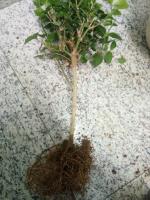When to Give Tomatoes Plant Food
Tomatoes are one of the most popular vegetables (or fruits) in the world, known for their juicy, red flesh and rich flavor. If you're growing tomatoes in your garden, you may be wondering when the best time is to give them plant food. In this article, we'll explore some tips and tricks for feeding your tomato plants and maximizing their growth and productivity.
Understanding Tomato Nutrient Needs
Before we dive into the timing of feeding your tomato plants, it's important to understand their nutrient needs. Tomatoes require a combination of nutrients, including nitrogen, phosphorus, and potassium, to grow and produce fruit. Nitrogen is responsible for leaf growth and plant development, phosphorus supports root growth and flower/fruit production, and potassium helps with overall plant health and disease resistance.
When selecting fertilizers or plant food for your tomatoes, look for options that contain a balanced mixture of these nutrients, such as an NPK ratio of 10-10-10 or 8-8-8. Avoid fertilizers high in nitrogen, as they can lead to excessive leaf growth and less fruit production.
Feeding Tomatoes at Planting Time
When you first plant your tomato seedlings, it's a good idea to give them some plant food or fertilizer right away. This will help establish their root systems and give them a boost of nutrients to get started. Use a granular fertilizer or slow-release fertilizer that will gradually release nutrients over time.
You can also mix in some compost or well-aged manure to the soil before planting, which will provide a natural source of nutrients over a longer period of time. Just be sure to avoid fresh manure, as it can burn the plants and release too much nitrogen all at once.
Feeding Tomatoes During the Growing Season
During the growing season, you can continue to feed your tomato plants every 2-3 weeks with a balanced fertilizer or plant food. Be sure to follow the package instructions for dosage and application. You can also use a liquid fertilizer, which can be applied directly to the soil around the roots or sprayed on the leaves.
In addition to regular fertilization, you can also use other techniques to enrich the soil and promote plant growth. For example, adding a layer of mulch around the plants can help retain moisture and nutrients, while also suppressing weeds. You can also use compost tea or other natural remedies to add extra nutrients and minerals to the soil.
Feeding Tomatoes During Fruit Production
When your tomato plants start to produce fruit, it's important to be strategic about your plant food regimen. As mentioned earlier, too much nitrogen can lead to excessive leaf growth and less fruit production. At this stage, it's best to switch to a fertilizer or plant food that is lower in nitrogen and higher in phosphorus and potassium, such as an NPK ratio of 5-10-10 or 4-8-8.
You can also use other techniques to encourage healthy fruit development, such as pruning off excess foliage and providing support for heavy fruit clusters. Make sure to continue regular watering and fertilization throughout the fruiting stage, to prevent stress and ensure optimal growth and flavor.
Conclusion
When to give tomatoes plant food depends on several factors, including the stage of growth, the nutrient needs of the plant, and the type of fertilizer or plant food you are using. By understanding these factors and following some basic guidelines, you can provide the right nutrients at the right time, and enjoy abundant, delicious tomato harvests all season long.

 how many times do yo...
how many times do yo... how many planted tre...
how many planted tre... how many pine trees ...
how many pine trees ... how many pecan trees...
how many pecan trees... how many plants comp...
how many plants comp... how many plants can ...
how many plants can ... how many plants and ...
how many plants and ... how many pepper plan...
how many pepper plan...































